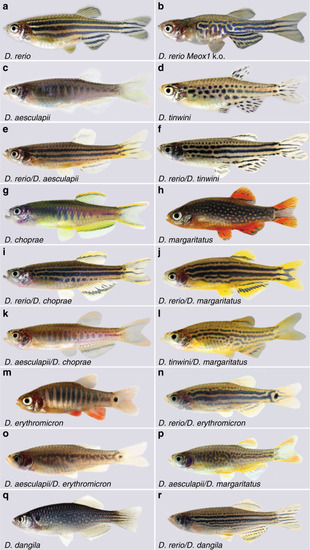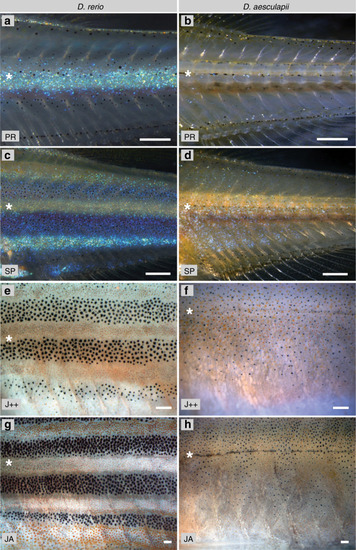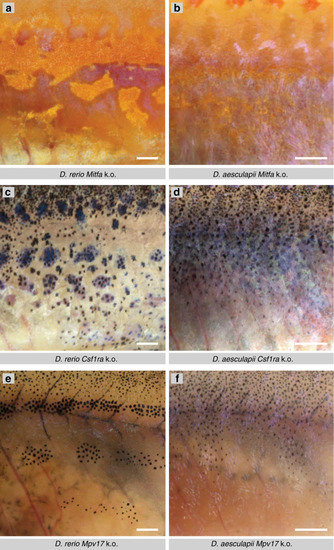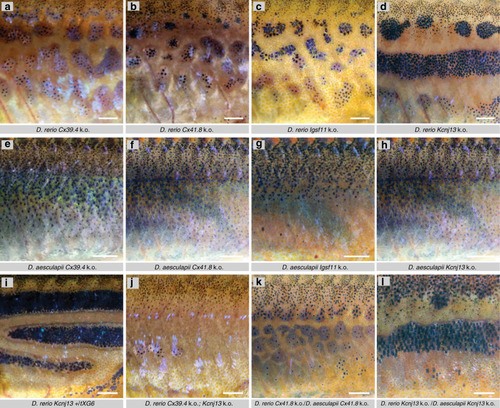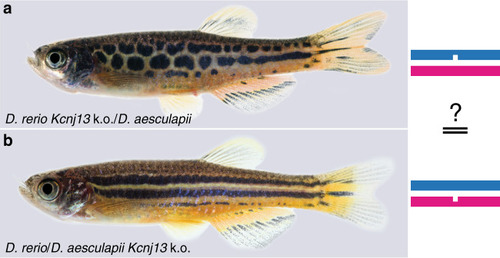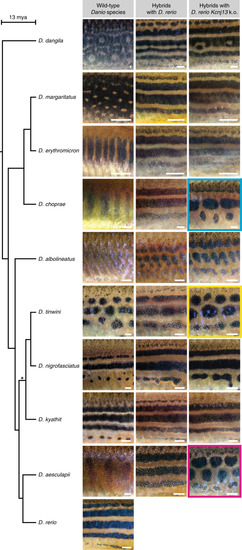- Title
-
Evolution of the potassium channel gene Kcnj13 underlies colour pattern diversification in Danio fish
- Authors
- Podobnik, M., Frohnhöfer, H.G., Dooley, C.M., Eskova, A., Nüsslein-Volhard, C., Irion, U.
- Source
- Full text @ Nat. Commun.
|
|
|
|
|
In PHENOTYPE:
|
|
In PHENOTYPE:
|
|
Two hybrids between |
|
On the left the phylogenetic tree depicts the relationship between the |

